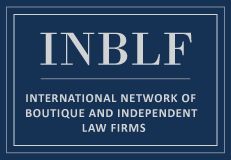Since the emergence of the Internet in the late 1990’s, the number of people online has grown from about 16 million in 1996 to an estimated 3 billion by the end of 2014, with approximately 40% of the world’s population now online. For devices – PC’s, smartphones, DVD players, tablets, and appliances – the number now connected online is equally staggering, with an estimated 26 billion devices coming online by 2020, according to Gartner.
The Internet of Things (IoT), the general description of how machines can connect us and our “things” by gathering, storing and processing information online and in real time, is an amazing phenomenon. We live in an increasingly connected world, with no turning back.
Making sense of the challenges and opportunities presented by the IOT is critical for any business that expects to seek financing in 2014 and beyond. To this end, decision makers should keep five basic things in mind.
- The IoT already is here for your business. Any business that delivers a product or service also obtains information from customers. Indeed, many businesses seeking funding routinely focus not just on their core deliverable, but on the “user data” that can be gathered in the sales process. Using that data to deliver the right weight, size, or color for the next sale or even to develop the next generation product or service is a commonsense, and required, business strategy. With the IoT, innovators now are thinking not just about gathering basic information, but also about how to extract more and better information to deliver immediate, focused solutions at higher margins. Consider the example of urban billboards that can peer at passersby, assessing how they fit desired customer profiles so that messages can be adjusted within seconds. Knowledge is power and immediate knowledge can mean real competitive leverage.
- Established companies have, or are developing, IoT strategies. Google’s recent acquisition of Nest Labs for its thermostat technology has sparked considerable interest and underscored the need for even the most established companies to develop an IoT strategy. Substantial companies like Cisco, Verizon, and Intel, whose core competency is connecting data to decisions, have formidable IoT strategies under development already and they are on the lookout for new businesses or technologies in which to invest or acquire. More locally, PTC’s announced acquisition of Axeda, a Foxboro-based developer of technology for connecting machines and sensors to the cloud, reflects this trend. Even in mature industries, the pressure to find new product and service opportunities abounds. Automakers are advancing plans for “smart,” driverless, connected cars and related accessories, with some expecting a rollout of this line of automobiles within five years. Emerging businesses that can develop IoT technologies and products soon will have more and broader exit strategies among both leading, innovative companies and also with larger, more established companies which decide to “buy” rather than “build” new product offerings.
- Investors can understand the IoT. Many of the best technologies seem the most obvious in hindsight, and products and platforms being developed for the IoT seem like logical next steps in product evolution. Consider the example of en-Gauge, a Rockland based developer of remote monitors of fire extinguishers, which now, with IoT technology, can connect “old world” devices and legacy systems to provide immediate, critical, and centralized alerts on the availability and status of extinguishers throughout a tall building. Smart meters, devices and control systems like these are easy to explain, especially given that most investors are consumers and have experienced many examples of web-enabled innovation first-hand. Investors, whether angels or institutions, are far more likely to invest when they can assess the size of the market and embrace the logic and soundness of the revenue model. Investors also will note the accelerating pace of IoT merger & acquisition activity. Nothing inspires investment like the possibility of a near-term exit and a competitive bidding process.
- Less can be More. Given the ubiquity of wi-fi, the availability of web tools, and the declining price of laptops and other startup essential equipment, the cost of developing the next Nest Labs is a lot less than it used to be. Smaller overall budgets and, in turn, smaller financing rounds can make a lot of sense at the earliest stages of a business. Indeed, many innovators are giving as much hard thought to their financing strategy as they are to their technology strategy. Raising smaller rounds, targeted to development milestones that can in themselves justify a higher subsequent valuation, will result in more careful and targeted spending and far less dilution to founders. Human capital and good connections also are critical and no longer need to be the exclusive province of a small number of “marquee” institutional investors offering large dilutive rounds of capital. Many founders now understand the importance for overall, long term valuation of “value added” directors and outside advisors who can offer introductions to potential team members and connections to “smart money.”
- Team matters more than ever. Many investors think about potential investments as “numbers” deals, which are attractive as a result of historical financial results, or “story” deals, which are compelling because they offer a clear vision of a bright future, whether in the form of a disruptive technology, or a cure for a debilitating disease. The IoT allows founders of emerging businesses to fashion their companies as a little of both. These days, many investors will want to meet and be comfortable with all team members, including and especially, the CEO, CFO and CMO (or at least the persons with those responsibilities) Finding team members who can both understand IoT technology applications and also communicate “the story” in clear and simple language will be critical for success.
The last twenty years or so have seen a sea change in technology development. No longer do web-enabled tools seem the stuff of science fiction. Instead, and in fact, most of us now expect technology solutions for everyday business and personal challenges. With the IOT continuing to emerge, those businesses connected to it are most assuredly the ones that will attract financing and build something bigger and faster.
Learn more at our upcoming event on November 13th. Click here for details.
Lawrence H. Gennari is a founding partner of Gennari Aronson, LLP and also an Adjunct Professor of Law at Boston College Law School, where he has taught “Mergers & Acquisitions,” “Corporate Finance,“ and “Advising Business Planners.”




